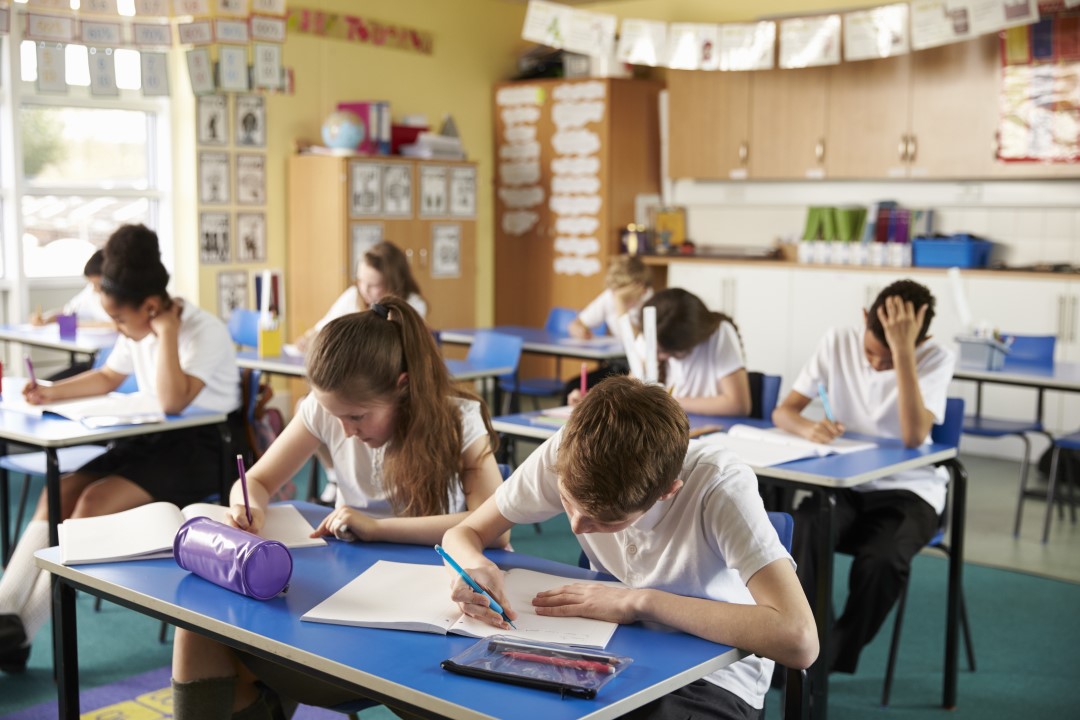Prepare your Year 6 pupils for SATs
Ensure Year 6 pupils have the understanding they need to progress by using our handpicked resources
14/03/2024

It’s SATs season and, whatever your view of end-of-KS2 assessments, we all want our pupils to feel prepared and confident for the tests that they’ll sit. You may also be starting to think about onward transition to KS3, and how to ensure your pupils have the essential learning they will need to move on to secondary maths. NCETM resources can help and, in this feature, we share some useful materials for summer term planning.
Cracking the concept: long multiplication
If your pupils’ success hinges on whether they remember to ‘add the place holder zero’ when multiplying by a two-digit number, then it’s likely they are relying on procedural rather than conceptual knowledge. Our Curriculum Prioritisation (CP) slides on multiplication and division help build a deeper understanding in small steps, with representations alongside the written algorithm to unpick the concept. Accompanying Professional Development materials for multiplication strategies for larger numbers and long multiplication provide teaching guidance for each learning outcome.
Connected concepts: fractions, decimals and percentages
Adults will be aware that fractions, decimals and percentages are very closely connected concepts, but this is not always very obvious to children. If your pupils are struggling to make those links, they may be finding percentages a tricky concept. Our Curriculum Prioritisation classroom slides on fractions and percentages build understanding in small steps, exposing mathematical structures and enabling children to make those connections. Accompanying Professional Development materials linking fractions, decimals and percentages provide additional teaching guidance. If you’d like to try these materials with your class, we recommend going back a step or two in your planning process to make sure there are no gaps in understanding.
Confidence with division: two-digit divisors
One of the issues teachers may have with teaching division in Year 6 is how quickly many schemes move through this concept. Children have often barely grasped how to divide by a two-digit number using factors before they are whizzing on to long division. It’s little wonder many children will often jump to the most inefficient method or forget the steps of written methods. Try asking pupils to divide 203 by 23 and you’ll appreciate the pitfalls children may face! It’s worth taking your time to teach this concept carefully. Our Professional Development materials which look at dividing by two-digit divisors map out small, carefully thought-out, steps of learning to develop a deep understanding, with accompanying teaching slides from our multiplication and division CP materials for classroom use.
The squeezed concepts: geometry and statistics
Primary schools are busy places, packed with enrichment activities which are vital for younger pupils’ development, and we often need to prioritise the areas of maths that will form the main foundations for future maths learning. Geometry and statistics are often squeezed into the primary maths curriculum and, consequently, children’s understanding can be fairly insecure. To focus on the essential conceptual understanding and procedural knowledge children will need before they leave KS2, and get your pupils SATs-ready, our ready-to-progress slides for Year 5 and Year 6 are a great place to start. You can use the slides for small-group intervention or whole-class teaching, and work through them at your own pace. Watch our video to see how one teacher uses the slides in his classroom.
Mathematical structures: reasoning and problem-solving
As the 2023 Ofsted maths subject report points out, problem-solving is not a generic skill and pupils need to learn strategies to solve different problem types. Our Year 6 CP materials offer learning opportunities that expose children to think deeply about the maths they are learning, with opportunities to reason, conjecture, solve, prove and disprove built into the resources. Topic areas you may wish to explore, with problem-solving in mind, are Calculating using knowledge of structures (1), Solving problems with two unknowns and Calculating using knowledge of structures (2).
For more information on how to use the NCETM’s Curriculum Prioritisation materials watch our video: